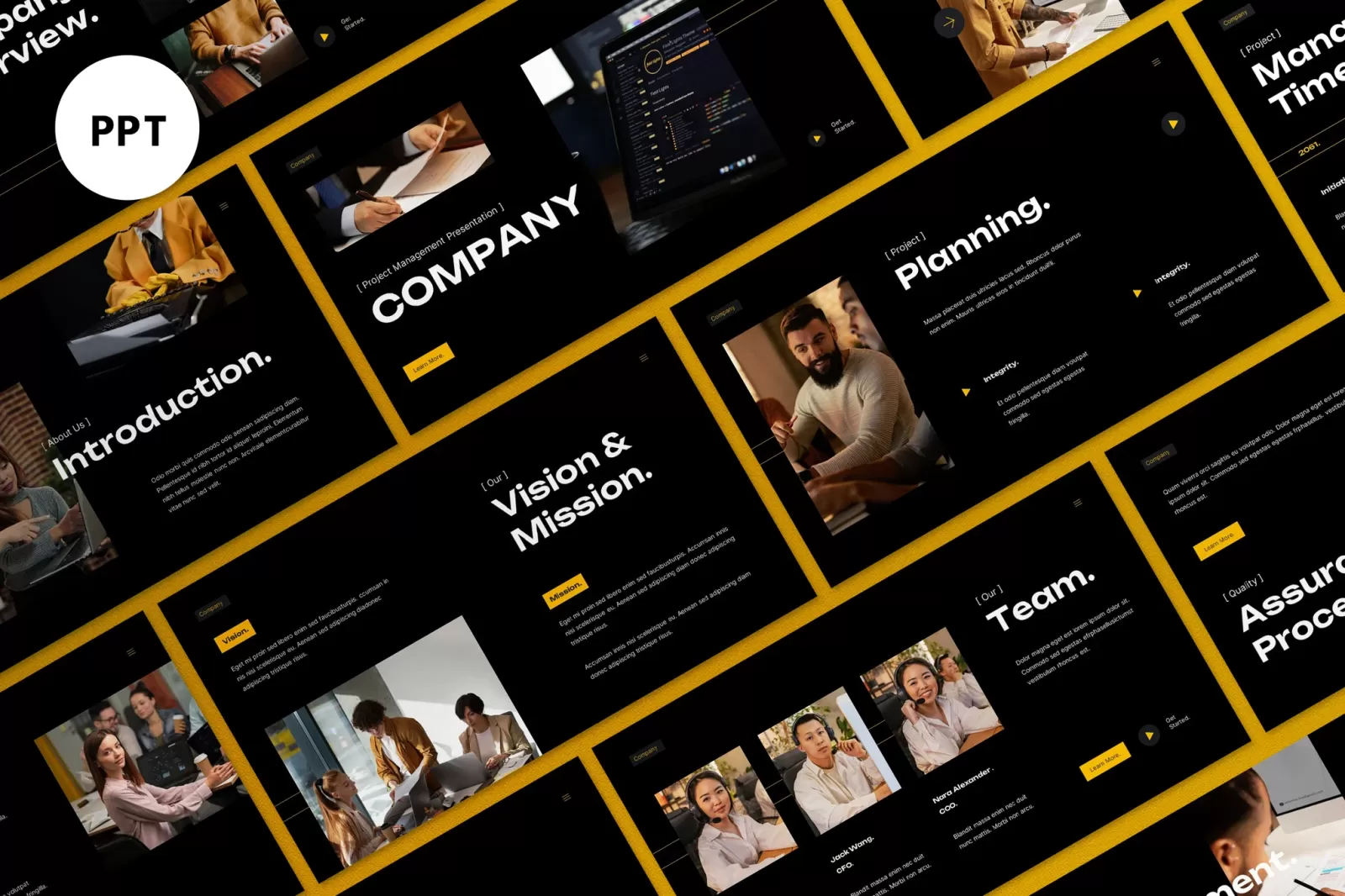Whether you're pitching an idea, presenting quarterly results, or leading a training session, the way you deliver your message can make or break its effectiveness. This is where business templates for PowerPoint come in. They streamline the process of creating polished, persuasive, and visually appealing presentations, even if you're not a designer. This comprehensive guide explores the best types of business templates available, how to use them strategically, and what to consider when choosing the right one for your needs.
Why Business Templates Matter
First impressions count, and nowhere is this truer than in the business world. When you're standing in front of an audience, your slides are often the first thing people notice. Sloppy layouts, mismatched fonts, or unclear charts can distract from your message or, worse, damage your credibility. Well-designed templates eliminate those risks by offering pre-set layouts, consistent styles, and cohesive color schemes tailored to a business context.
Templates also save time. Instead of designing slides from scratch, you can drop your content into professionally created frameworks. This helps ensure your presentation is both visually appealing and structurally sound, allowing you to focus on content and delivery.
Types of Business PowerPoint Templates
Not all templates are created equal. Different types of business presentations call for different formats, layouts, and visual elements. Here’s a breakdown of the most common categories and when to use them:
1. Pitch Deck Templates
These templates are ideal for startups or entrepreneurs looking to secure investment. A good pitch deck includes slides for problem statements, solutions, market opportunities, competitive landscapes, business models, and financial projections. Look for clean, modern designs with space for infographics and images that tell a compelling story.
2. Corporate Overview Templates
When presenting your company to new clients, partners, or employees, a corporate overview template helps you provide a high-level snapshot of your brand. Typical slides include company history, vision and mission, leadership team, key milestones, and services or product offerings. These templates often use a formal, professional style with muted colors and a strong visual hierarchy.
3. Financial Report Templates
For quarterly updates, budget discussions, or board meetings, financial templates make it easy to present numbers in a visually digestible format. They typically include graphs, charts, balance sheets, income statements, and KPI dashboards. Look for templates that support Excel integration or data-driven charts to update figures easily.
4. Marketing Strategy Templates
Marketing professionals can use specialized templates to lay out plans, track campaign performance, or present branding ideas. These templates often feature timelines, customer journey maps, SWOT analyses, and conversion funnels. Bright colors, icons, and visual storytelling elements are common to keep the content engaging.
5. Sales Presentation Templates
Sales templates are built to persuade. They include slides for value propositions, product features, pricing tables, customer testimonials, and case studies. The best sales decks have clean layouts that allow for impactful visuals, punchy headlines, and minimal text.
6. Project Proposal Templates
Need to pitch a new internal project or external initiative? These templates are structured around objectives, scope, deliverables, timelines, and resource requirements. Clear layouts and progress indicators help your audience quickly grasp the project’s value and feasibility.
7. Annual Report Templates
Used by corporations, nonprofits, and institutions, these templates showcase a year's worth of achievements and data. They balance narrative storytelling with data visualization, often incorporating plenty of charts, maps, and infographics. They typically use corporate branding, making it essential to choose a customizable template.
8. Training and Workshop Templates
When educating teams or clients, templates designed for learning environments make information easier to absorb. These templates emphasize flow and engagement, with sections for objectives, interactive elements, review quizzes, and exercises.
9. Timeline and Roadmap Templates
Essential for strategic planning presentations, these templates help show progress over time or outline future initiatives. Great for product development, growth planning, or marketing campaigns, they should offer flexibility in layout and timeline structure.
Key Features to Look For
When choosing a business presentation template, consider more than just looks. Here are the most important features to evaluate:
-
Customizability: Can you easily change colors, fonts, and layout elements to match your brand?
-
Slide Variety: Does it offer enough slide types to cover your content needs without repetition?
-
Data Visualization: Are there charts, graphs, and infographic elements that can represent your data clearly?
-
Ease of Use: Is the layout intuitive? Can a non-designer edit and update the template without a steep learning curve?
-
Consistency: Are fonts, icons, and colors used consistently throughout the deck?
-
Compatibility: Make sure the template works well with your version of PowerPoint and ideally integrates with tools like Excel or Google Sheets.
Best Practices for Using Business Templates
Even the best template can fall flat if used incorrectly. Follow these tips to ensure your presentation works as intended:
1. Stick to One Theme
Avoid mixing multiple templates or styles in a single presentation. Consistency reinforces your brand and helps your audience follow along without distraction.
2. Limit Text
Business templates should guide the viewer, not overwhelm them. Use concise bullet points or single sentences per slide. Save in-depth details for verbal explanation or a handout.
3. Use High-Quality Visuals
Replace default images or icons with visuals that are relevant to your content. Stock photography should be professional and on-brand. Whenever possible, use custom charts or illustrations to explain complex concepts.
4. Match Your Brand
Customize the template to reflect your organization’s colors, fonts, and tone. This builds recognition and credibility, especially when pitching to external stakeholders.
5. Test Across Devices
Presentations often look different on projectors, monitors, or mobile devices. Test your slides in advance to ensure readability and layout consistency.
Where to Find Great Business Templates
A number of platforms offer high-quality templates tailored for business use. Some are free; others offer premium designs for a fee. Here are a few places to start:
-
Envato Elements: Offers a vast collection of business-focused presentation templates with professional aesthetics and frequent updates.
-
SlideModel: Known for its business-centric designs including financial, marketing, and project templates.
-
SlidesCarnival: Offers free templates that are well-suited for startups, educators, and nonprofits.
-
Canva: While primarily a design tool, Canva offers a selection of presentation templates with drag-and-drop features and branding tools.
-
GraphicRiver: Ideal for one-time purchases, with professional templates for specific business scenarios.
Business Presentation Trends to Watch
As business communication evolves, so do presentation trends. Staying on top of these can give your presentations a modern, relevant feel:
-
Minimalist Design: Clean slides with lots of white space and one central idea per slide help improve comprehension.
-
Bold Typography: Big, readable fonts paired with subtle imagery help drive messages home.
-
Data Storytelling: More business presentations are incorporating narrative frameworks with charts to tell a compelling story.
-
Animated Transitions: Light, tasteful animations can keep your audience engaged without becoming distracting.
-
Dark Mode Templates: With more devices using dark mode, templates optimized for darker backgrounds are becoming more popular.
Final Thoughts
The right template can transform your business presentation from a bland collection of bullet points into a persuasive, visually appealing experience that drives results. Whether you're an entrepreneur seeking funding, a manager explaining strategy, or a consultant presenting insights, using a purpose-built template ensures your content shines.
While there are countless design options available, the best business templates focus on clarity, structure, and brand alignment. They don’t just look good—they help your audience understand and remember what matters most. When used wisely, business presentation templates are one of the most powerful tools in your communication arsenal.
And while the term PowerPoint Templates may only appear once or twice here, the impact of using the right one can resonate throughout your organization. So, take the time to explore, customize, and master your business presentation game. Your ideas deserve nothing less.



